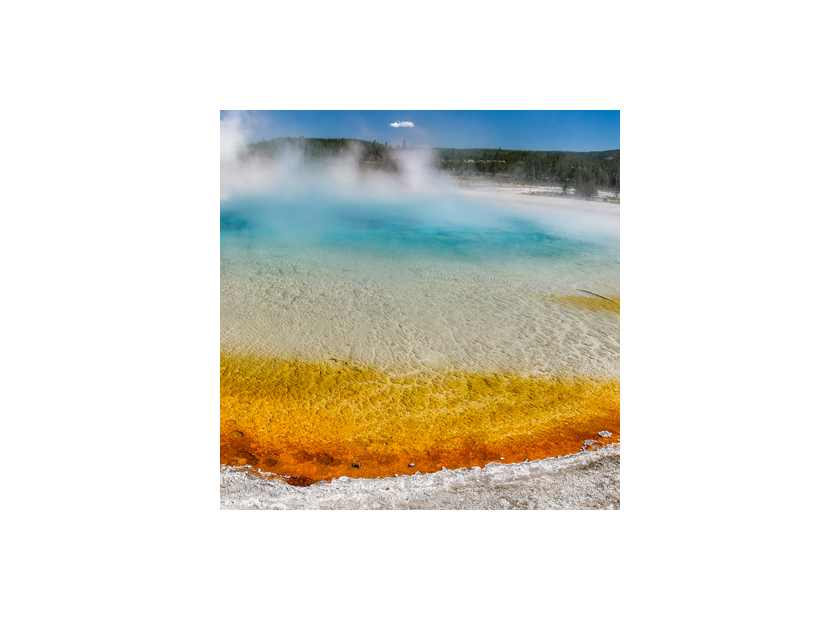Extremophiles: Life on the Fringes
Humans are extremely adaptive creatures. We have crowned ourselves ruler of our planet, cultivating civilizations across the globe from the hottest deserts and tallest mountain ranges, to even floating communities such as the Kompong Chhnang floating city in Cambodia.
 Halobacterium salinarum is a marine Gram-negative obligate aerobic archaeon making it a polyextremophile.
Halobacterium salinarum is a marine Gram-negative obligate aerobic archaeon making it a polyextremophile.Humanity, however, is still constrained by physical limitations such as the need for oxygen, drinkable water, and food sources. Though we have even traveled beyond the confines of our own planet, the Apollo astronauts still required these necessities of life. However, the true kings of adaptation are so small, we did not even know they existed until Antoni Van Leeuwenhoek discovered their existence in 1665. We are of course speaking about bacteria, though more specifically we are speaking about the extremophiles.
Extremophiles (from Latin extrēmus meaning "situated at the end, edge, or tip and Latin philiā meaning "love") is an organism that thrives in physically or geochemically extreme conditions that are detrimental to most life on Earth. It was once thought impossible for any organism to survive such things as the extreme heat from thermal vents or the dry, desiccating conditions of the Atacama desert. We now have data that shows bacteria living in a subterranean lake covered by a half mile of ice in Antarctica as well as bacteria thriving underneath 1,900 feet of sea floor beneath 8,500 feet of Atlantic Ocean.
Extremophiles come in a wide variety of classifications with some possessing multiple classifications. This includes the following:
Acidophile: An organism with optimal growth at pH levels of 2 or below.
Alkaliphile: An organism with optimal growth at pH levels of 8.5-11.
Anaerobe: An organism that does not require oxygen for growth such as Spinoloricus cinzia. Two sub-types exist, facultative anaerobe and obligate anaerobe. A facultative anaerobe can tolerate anaerobic and aerobic conditions; however, most obligate anaerobes would die in the presence of even trace levels of oxygen.
Cryptoendolith: An organism that lives in microscopic spaces within rocks, such as pores between aggregate grains.
Halophile: An organism requiring at least 0.2M concentrations of salt (NaCl) for growth.
Hyperthermophile: An organism that can thrive at temperatures above 60 °C, such as those found in hydrothermal systems.
Hypolith: An organism that lives underneath rocks in cold deserts.
Lithoautotroph: An organism (usually bacteria) whose sole source of carbon is carbon dioxide and exergonic inorganic oxidation (chemolithotrophs) such as Nitrosomonas europaea. These organisms are capable of deriving energy from reduced mineral compounds like pyrites, and are active in geochemical cycling and the weathering of parent bedrock to form soil.
Metallotolerant: Capable of tolerating high levels
 Sulfolobus solfataricus is a hyperthermophilic archaea found in the Solfatara volcano.
Sulfolobus solfataricus is a hyperthermophilic archaea found in the Solfatara volcano.of dissolved heavy metals in solution, such as copper, cadmium, arsenic, and zinc; examples include Ferroplasma sp., Cupriavidus metallidurans and GFAJ-1.
Oligotroph: An organism capable of growth in nutritionally limited environments.
Osmophile: An organism capable of growth in environments with a high sugar concentration.
Piezophile: (Also referred to as barophile). An organism that lives optimally at high pressures such as those deep in the ocean or underground; common in the deep terrestrial subsurface, as well as in oceanic trenches.
Polyextremophile: A polyextremophile (faux ancient Latin/Greek for 'affection for many extremes') is an organism that qualifies as an extremophile under more than one category.
Psychrophile/Cryophile: An organism capable of survival, growth or reproduction at temperatures of -15 °C or lower for extended periods; common in cold soils, permafrost, polar ice, cold ocean water, and in or under the alpine snowpack.
Radioresistant: Organisms resistant to high levels of ionizing radiation, most commonly ultraviolet radiation, but also including organisms capable of resisting nuclear radiation.
Thermophile: An organism that can thrive at temperatures between 45–122 °C.
Thermoacidophile: Combination of thermophile and acidophile that prefer temperatures of 70–80 °C and pH between 2 and 3.
Xerophile: An organism that can grow in extremely dry, desiccating conditions; this type is exemplified by the soil microbes of the Atacama Desert.
It is important to note that just because most extremophiles are prokaryotes, some eukaryotes have been classified extremophilic such as the Pompeii worm and Antarctic Krill.
 AnaeroGRO, a pre-reduced anaerobic media by Hardy Diagnostics
AnaeroGRO, a pre-reduced anaerobic media by Hardy DiagnosticsHardy Diagnostics offers a wide variety of media for cultivating extremophiles.
For anaerobes, we have our AnaeroGRO, which is a pre-reduced anaerobic media in oxygen flushed pouches.
Read more about AnaeroGRO on our website.
For halophiles, Hardy Diagnostics offers a variety of tubes and agar plates with high Sodium Chloride (NaCl) percentage. This includes J165, U287, 40DENACL3, 40DENACL6, L22, R26, K49, and more.







